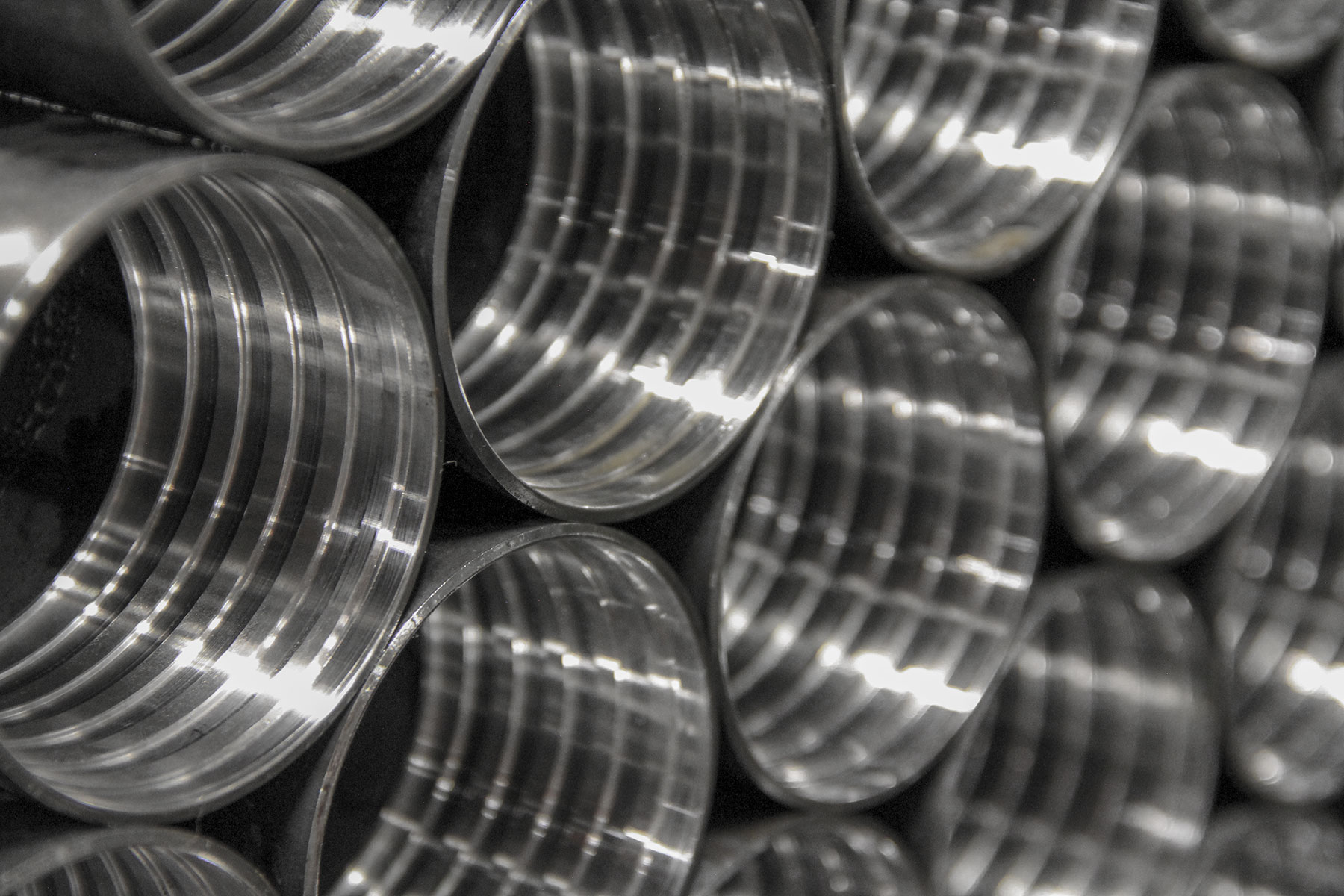EXPLORATION
abril 2, 2020
Directional Drilling with Wireline Core Barrels
Directional drilling has been an industry challenge for many years, overcome through the development of many different tooling solutions and drilling practices. From simple reconfigured wireline core barrels and modified drilling parameters, to steerable tools and down-hole motoring, success is defined by reaching the desired target, using a sufficiently gradual deviation(s) to avoid ‘excessive rod loading.’
The drill string’s resistance to deviation—otherwise known as ‘stiffness’—can be determined by its material and mechanical properties. Since all wireline tubular components are made from cold-drawn steel tubing, they all have the same fundamental properties. Specifically, regardless of chemistry, heat treatment, or hardness, all steel grades respond with the same amount of bend to a given load (the ratio of stress (load) to strain (bend) is known as the “modulus of elasticity”). Furthermore, any two steel tubular components with equal dimensions will have equal stiffness, even if produced by different suppliers, regardless of the steel grade, heat treatment, or hardness.

The directional response or sensitivity of the drill string to changes in drilling loads or speeds, or in formation changes, depends heavily on the drill string stiffness. The stiffness of wireline drill rods more than doubles in moving to the next larger system (e.g. BQ to NQ, NQ to HQ, etc.). As a result, larger systems drill straighter but have much more resistance and greater lateral loading when drilling through borehole deviations. Given a typical impregnated coring bit, and constant drilling parameters (assuming no formation changes), the borehole will tend to form a slow helix that is determined primarily by the stiffness of the drill string. With borehole friction, the drill string itself can become unstable, buckling into a helical shape which tightens or loosens with changes in drilling loads and speeds, but then elastically returns straight when unloaded.
The Q™ wireline core barrel was originally designed to utilize an outer tube with a substantially larger diameter and wall thickness than the unstable string of drill rods behind it. Standard outer tubes provide approximately 40% greater stiffness, and full-hole style outer tubes provide approximately 70% greater stiffness! The outer tube can then act as a stabilizing bearing or collar. The greater the increase in stiffness, the more effective a directional control to resist changes in the formation, drilling parameters, or drill string stability. This control can be enhanced with stabilized reaming shells, stabilized adapter couplings, and stabilized locking couplings.

Consider the directional impact if the outer tube is replaced with another drill rod, completely removing any difference in drill string stiffness, and the related directional control. Originally developed in the 1980’s in an attempt to direct borehole deviations, core barrel configurations, known as “flexi-barrels,” replace the outer tube with an equivalent length assembly of a drill rod and adapters. However, the lack of directional control combined with the lack of directional predictability, typically results in erratic deviations requiring either corrective deviation attempts or reaming to reduce excessive deviations. Therefore, the use of flexi-barrels is not recommended.
When planning holes, consider the potential impact of rod deviation. The stiffness of steel tubes is relatively high, and as mentioned before, increases with system size and section thickness. As a result, the drill string will respond with high side loads against the borehole wall, especially just before and after a deviation. For example, an NQ™ size drill rod deflected to the recommended maximum deviation of 1.0 degrees over its length produces approximately 9kN (2,000lb) of side load, and an HQ™ produces 18kN (4,000lb) at only 0.8deg per rod length. Depending on the formation, these high side loads can produce high torque, heavy rod wear or even ‘heat check cracking.’ Additionally, these contact points generate drag and ‘stick-slip’ conditions, which can produce a dynamic response sufficient to permanently deform the drill string into a helical shape. In extreme cases, where the drill string completes enough rotations approaching or exceeding maximum deviation, fatigue failures will occur. Using the minimum deviation possible to hit target and sticking to NQ size rod will reduce the side loads, torque and chances of twisting or cracking rod.
Originally published in Australasian Drilling Magazine, February/March 2020
SIGN UP FOR THE INSITE DIGEST
Sign up for the INSITE Digest to receive articles like this and more.





A really well structured and presented article Chris.
It would be good to get your views on the effects of running multiple “stabilising components” in the drillstring – short “full-hole” type sections. Ideal length and spacing between “stabilisers” will depend upon drillstring diameter but is there a rule of thumb that could be applied?
Thanks Colin. You pose an interesting question that remains an area of research, where the new TruSub(TM) is expected to shed light (in-line drill-string data acquisition). Inserting multiple stabilizers creates a complex system that is difficult to model or simulate. Whether placed near hole bottom or placed strategically to combat planned deviations, additional stabilization can improve control at the expense of increased torque and power, but the effects remain sensitive to driller inputs (WOB, RPM, etc.). Also, the upper portion of the drill string can suffer from increased dynamics (above the stabilized portion). While Boart Longyear can offer different drill string stabilizing solutions, there is not yet enough data to develop a good ‘rule of thumb’ for drilling with multiple stabilizers.